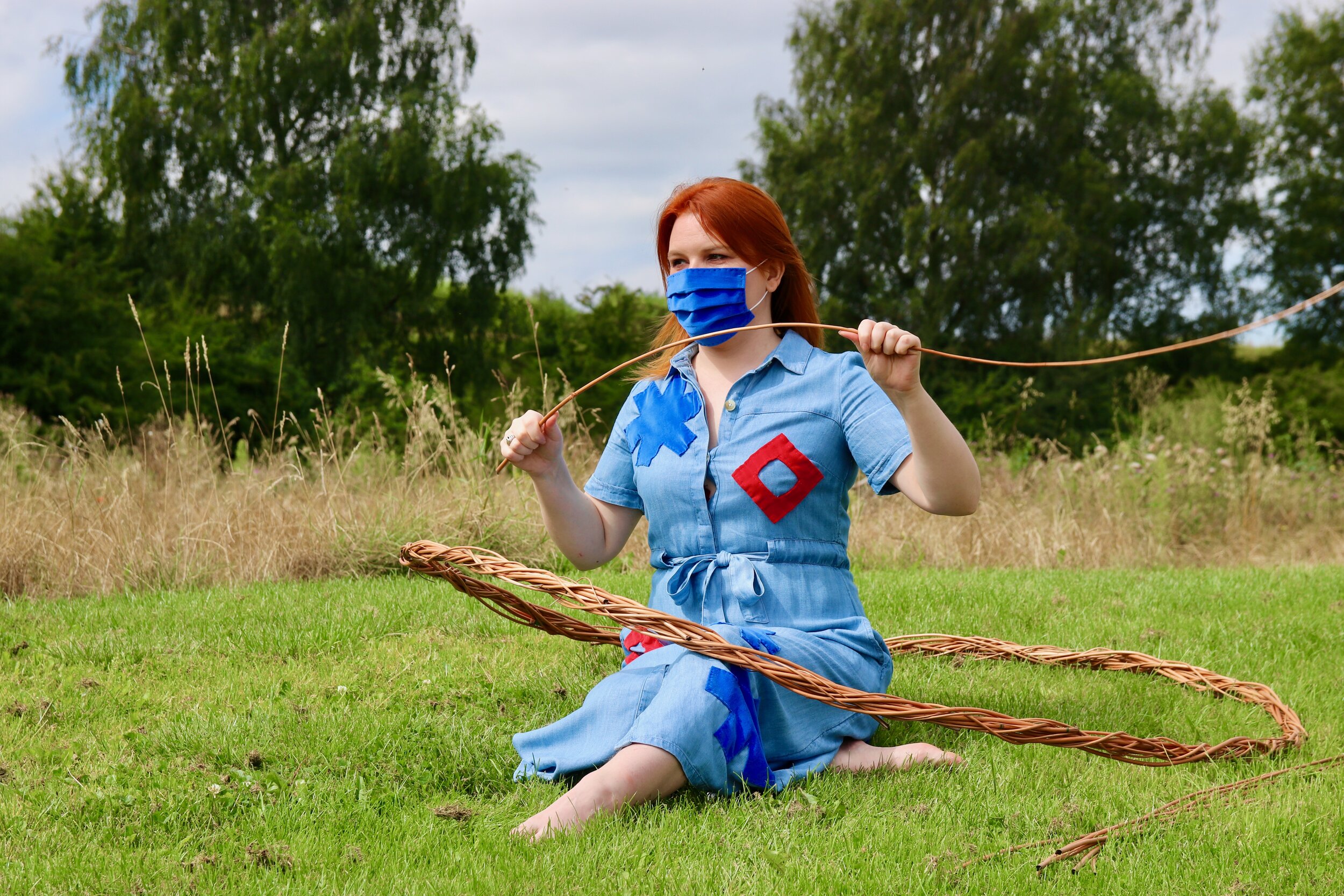
Traditions of Care 2020. A lockdown project exploring new customary practices for a world in environmental crisis. Photo credit: Lucy Wright
As an introduction to Social Art Publications, our first blog post is one of four Q&As with the people working behind the scenes at SAP.
1. Who are you?
My name is Lucy Wright. I’m an artist and researcher based in Leeds. My social practice is concerned with the under-representation of women (also LGBTQ+ and BIPOC communities) in the existing canon of English folk arts and the creation of new, more inclusive traditions for our divided society. A lot of my past work has involved performance and craft, but I’ve also begun to integrate my studio practice as a painter. Recent commissions include Plough Witches for Meadow Arts, Apotropaia for Leeds Piano Trail and Chasing the Harestail for Jersey Heritage.
I also spend half of the week working as a Social Producer for the arts charity Axis, where I’m the head librarian of the Social Art Library, a project to build the first artist-led archive and resource bank for and about socially engaged practice. I spent the last decade in the academic hinterlands, exploring the intersections of social art and ethnography making. I published a bunch of articles and book chapters on folk, as well as two co-authored reports on social practice, Beyond the Gallery (2015) and From Network to Meshwork (2020) with Amanda Ravetz. I currently edit Social Works? Open journal.
In 2019, I published my first artist book, 21st Century Folk Art: Social art and/as research through Social Art Publications and this led to my joining the team!
2. What does SAP mean to you?
SAP is important because it addresses two major gaps in the current infrastructure around social art practice. Firstly, research has identified a real lack of critical writing about social and participatory arts and this is, in part, due to a paucity of suitable contexts to share this kind of work. We believe that social practice stories matter and that there is so much incredible knowledge amongst artists and the communities they work with, that’s at risk of being lost. We want Social Art Publications to be a space to progress the discourse around social art and to be a site of care for artists working with people, to share their experiences and ideas.
“We want Social Art Publications to be a space to progress the discourse around social art and to be a site of care for artists working with people, to share their experiences and ideas.”
Secondly and connectedly, the publications in the SAP catalogue collectively construct a shared history of the field of social practice. Artists’ voices are too often lost in discussions about the value of socially engaged work, but SAP is an initiative by artists for artists, where we can all take ownership of our own narratives.
It’s also brilliant—in these times of increasing digital fatigue—to have a tactile, physical outlet for your work. You just can’t beat a beautiful, lovingly produced artist’s book, in my opinion, plus print is so much more stable than digital as a way of archiving for future generations!
3. What publication about social art practice have you enjoyed recently?
This is a deceptively simple question because there’s still not anywhere near enough publications about social practice—although we’re working hard to fix that! However, a book I’ve enjoyed recently is Shy Radicals by Hamja Ahsan (Book Works, 2017). Not strictly a social project, but a piece of speculative fiction on a future world in which a political movement of shy people (the ‘Introfada’) struggles to establish an independent homeland of Aspergistan, where they can live quietly and peacefully outside of the dominant extrovert culture. I picked it up at The Tetley in Leeds and read it in one sitting, open-mouthed with excitement! Hamja has also recently made a documentary film of the same name. You can find out more here.
You can find Lucy’s website at artistic-researcher.co.uk or follow her on Twitter.
